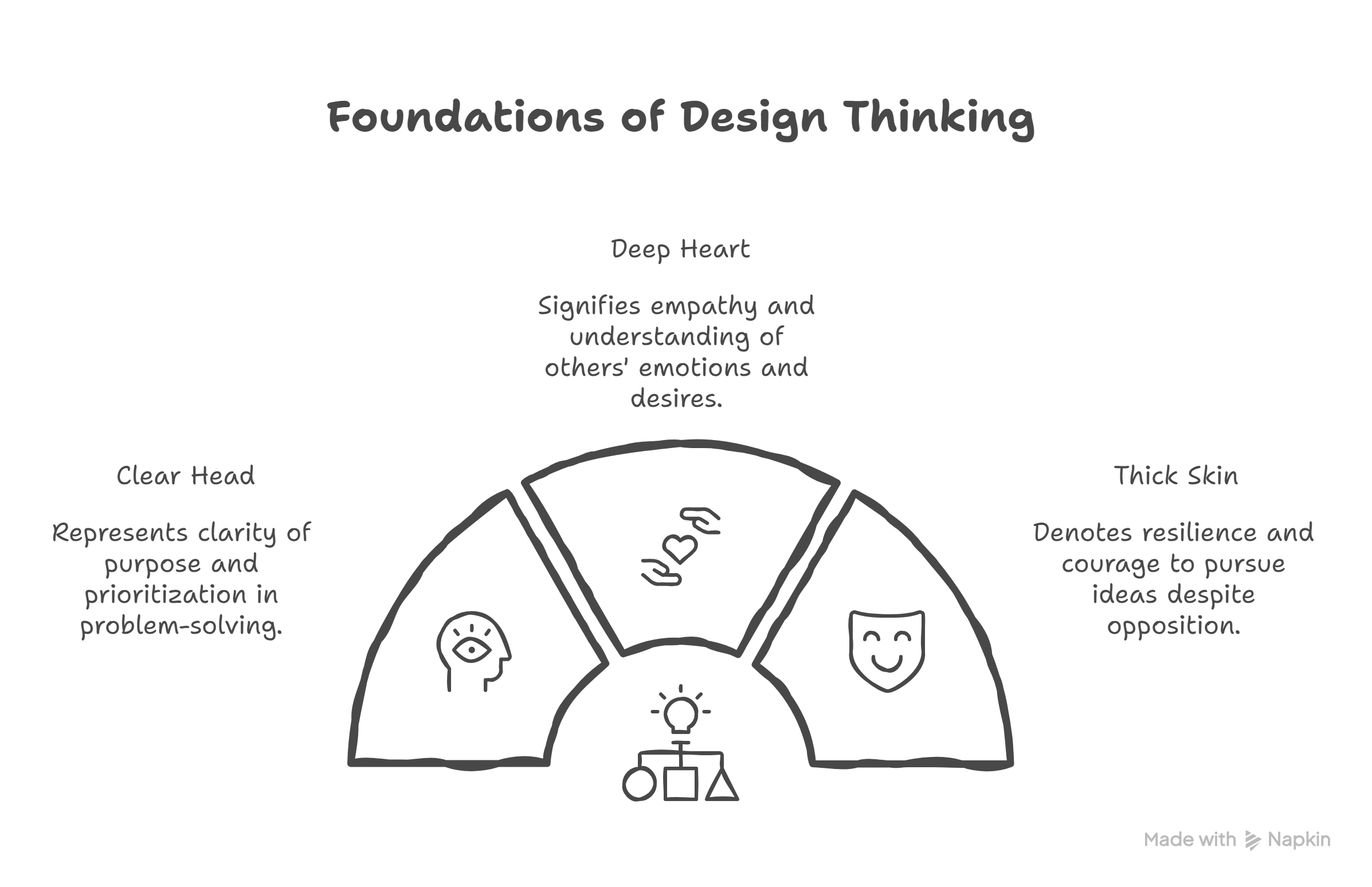The Mind of a Design Thinker
Being a design thinker is less about having the right tools or skills and more about possessing the correct mindset. The mindset is what brings the tools and skills together to create something valuable.
The Three Attributes of a Design Thinker's Mindset
A design thinker’s mindset can be defined by three key attributes:
1. A Clear Head A clear head means having a strong sense of purpose and knowing your priorities. Confusion about priorities can lead to ineffective problem-solving. It's better to be wrong with a clear priority than to be paralyzed by indecision. The most enduring learning comes from solving a real-world problem, rather than just learning a method for its own sake.
2. A Deep Heart A deep heart signifies compassion and empathy, which is the ability to proactively understand others' thoughts, feelings, aspirations, and desires without them being explicitly stated. This is different from sympathy, which is a reactive response to a problem that has already been stated. In a competitive, populous environment like India, where people are often self-serving, developing compassion requires conscious effort.
3. A Thick Skin A thick skin means not being overly concerned with others' opinions or seeking their approval. It is about having the courage to pursue a course of action you believe is right, even if it goes against the status quo. In a collectivist culture that values consensus and approval, developing a thick skin is particularly challenging. It is not about being insensitive; a person can have both a deep heart (caring about what others feel) and a thick skin (not caring what others think about them).
Tools, Skills, and Mindset
To be a design thinker, you need a combination of three things:
- Tools: The equipment or resources needed to do a job, like a painter's brushes or a carpenter's saw.
- Skills: The ability to use the tools effectively. For example, a trained chef can use a sharp knife safely and proficiently, while someone unskilled might injure themselves with the same tool.
- Mindset: The most crucial element, as it guides the application of tools and skills. It is the "why" behind the "what" and "how". For instance, Pablo Picasso used everyday garbage to create art, not because of his tools or skills, but because of his unconventional mindset that challenged the traditional idea of art.


No Comments